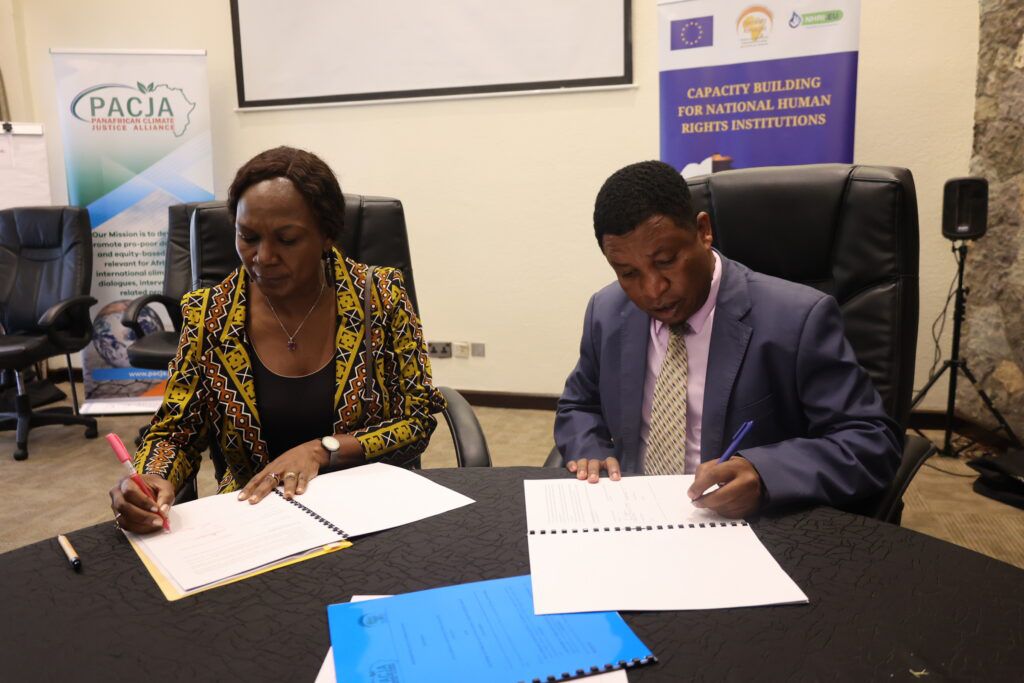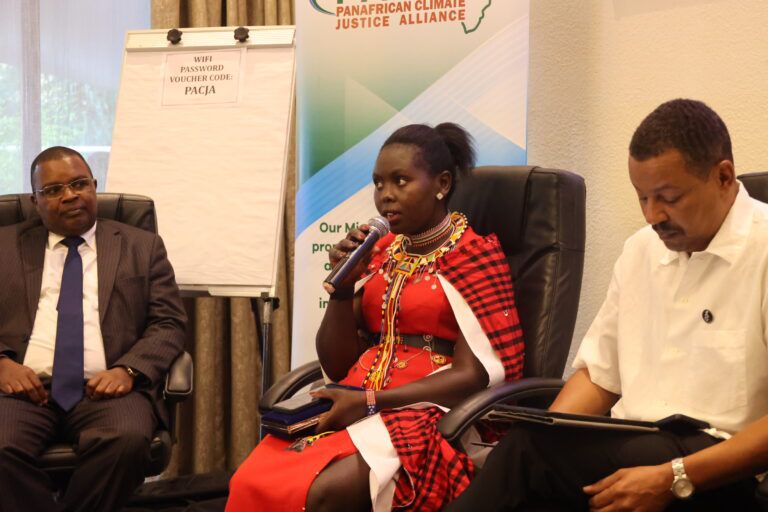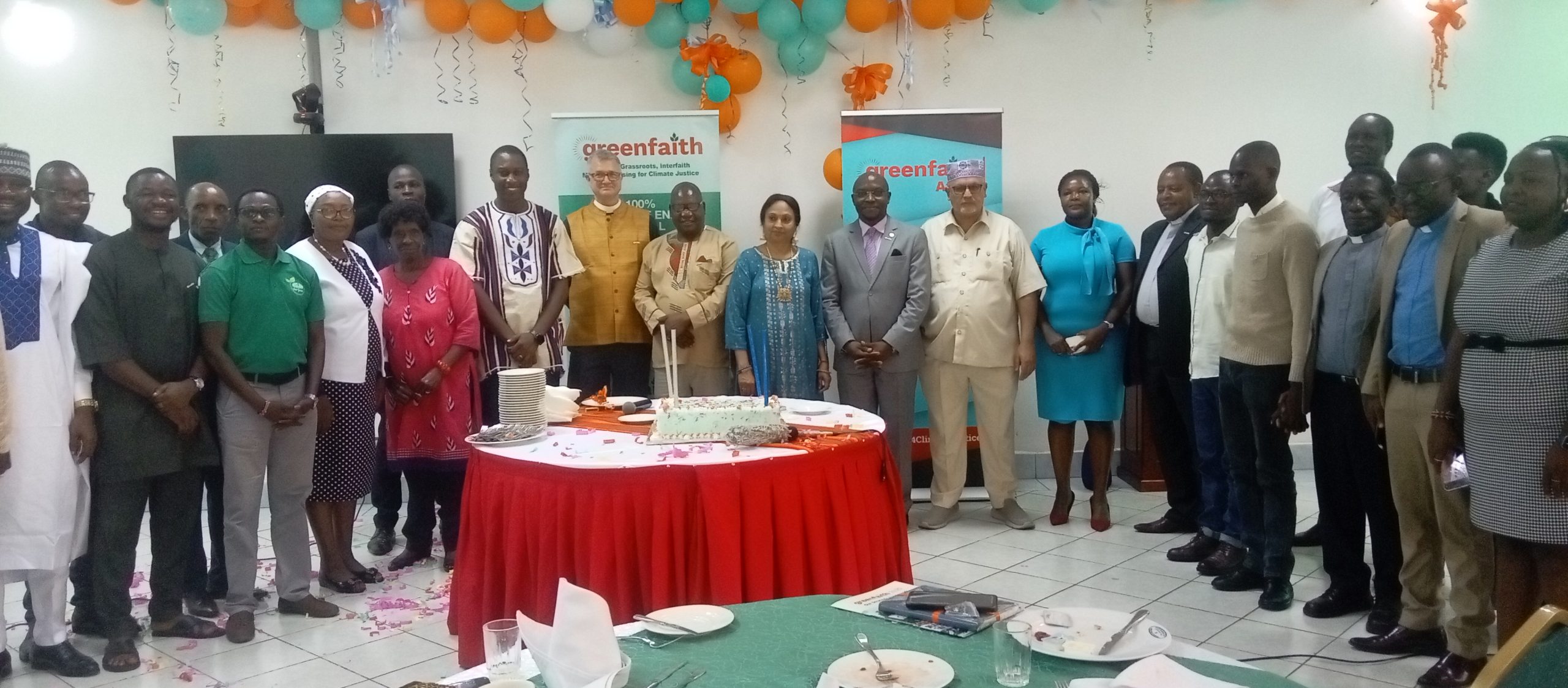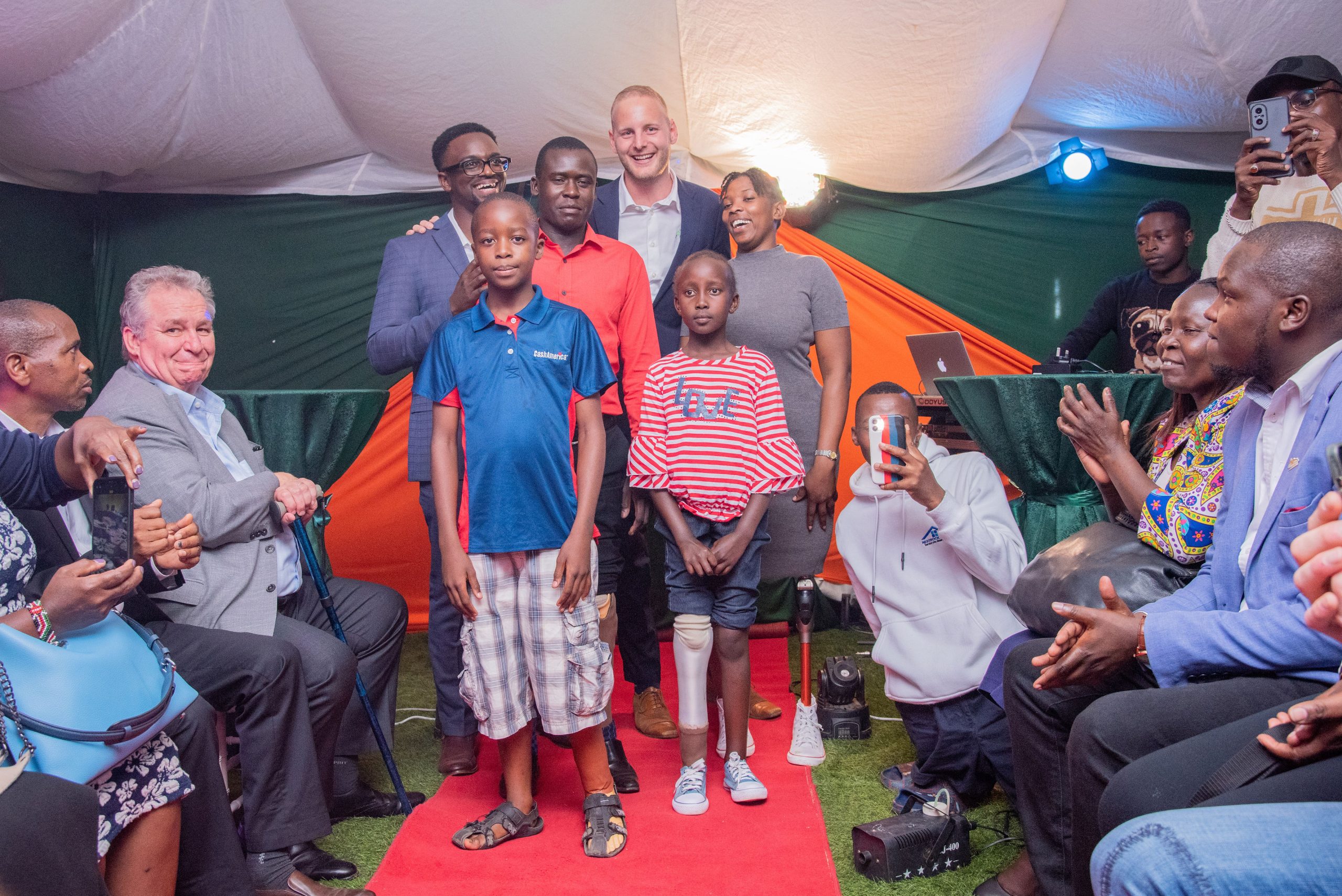By Eddah Waithaka
A major milestone was reached on 12 March 2024, at Sarova Panafric in Nairobi, when the Pan-African Climate Justice Alliance and National Human Rights institutions formally cemented their collaboration by signing a Memorandum of Understanding.

This landmark agreement marks a formal commitment to a joint effort to promote initiatives for climate justice across the whole of Africa.
The historic event took place during a thought-provoking media breakfast conversation entitled “Optimising Action in Pursuit of Climate Justice and Human Rights” in Nairobi, Kenya.
The meeting explored innovative strategies and collective action to address the pressing issues at the intersection of climate justice and human rights.
A pressing issue that requires immediate attention is the intersectionality of climate change and human rights.
Also Read:https://switchmedianews.wordpress.com/2024/03/07/non-state-actors-in-africa-denounce-ineffective-gcf-model-for-meeting-africas-priorities/
While the human rights regime has evolved, it still falls short of what is needed to address the complex issues of climate injustice.
Extreme weather events, rising sea levels and increasing temperatures have a direct impact on several human rights, including life, health, water, means of subsistence, adequate standard of living, education, property, self-determination and culture.

Unfortunately, the response to climate change is creating additional challenges, particularly in Africa. Carbon markets contribute to land grabs, depriving communities of productive assets and dictating land use options.
Demand for critical minerals further displaces communities and leads to a wide range of rights violations, including insecurity.
There may be insufficient safeguards in the existing Special Rapporteur mechanisms and Human Rights Council procedures on climate change.
Despite the recognition in the preamble of the Paris Agreement, gaps remain in conceptualising action and addressing human rights within strict geographical boundaries.
Climate change and human rights are intertwined. While climate change policies affect vulnerable groups, existing human rights frameworks may fall short. It’s time to bridge the gap and work towards a comprehensive international human rights framework.
“The linkage between NANHRI and PACJA is very important because NANHRI has got it’s National Human Rights Commissions across Africa. We are going to leverage that with our national platforms and then immediately the elements of this MOU will be implemented to the next level then we are going to link and perhaps think about starting human rights working groups within our national platforms, so that together with the national human rights commissions and our national platforms and their member organizations, I believe we are going to trigger action and close the gaps which are going to be there, ” said the Executive Director of PACJA Mithika Mwenda.
To effectively address climate injustice, an international human right to a clean and healthy environment should be developed. This comprehensive approach takes into account international, intergenerational and intra-societal injustices.
National human rights institutions, independent bodies mandated to protect and promote human rights, have a crucial role to play. Cooperation between NHRIs and the climate justice movement is essential for a holistic approach to human rights in the era of climate change.
During a panel discussion Justice David Mugo, Judge High Court of Kenya said, ” I wish we could have more champions and that is why I call upon PACJA and all your partners to invest more in capacity building not only for the citizens but also for judges and judicial officers. There is a lot of science in climate change. We need to understand the science.”
Climate justice movements and human rights actors need to work together to maximise impact. Prioritising profit over people has led to conflicts and struggles, including struggles over wildlife, as people seek to secure their livelihoods and ensure the safety of their families.






